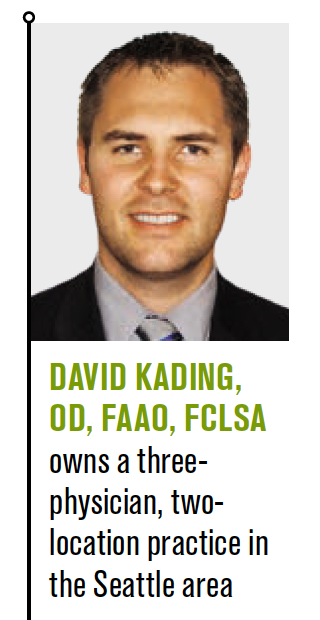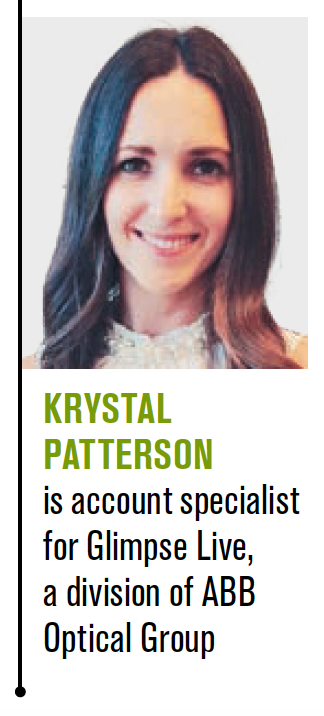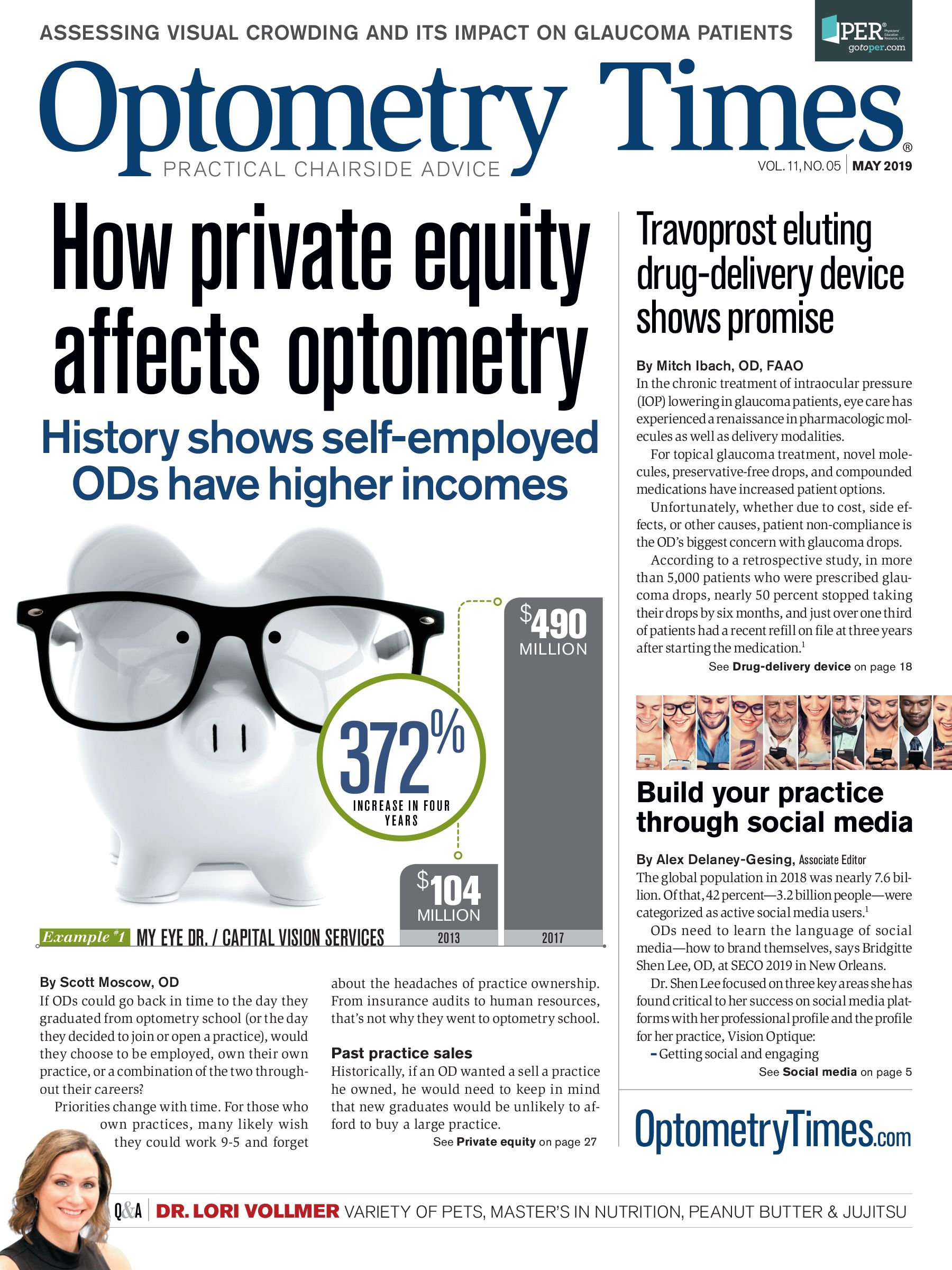Know what practice metrics to measure



In today’s eyecare world, optometrists are bombarded by numbers. It seems that everyone wants to show us a number or have us look at numbers.
My vendor reps have reports for how I am doing, my office team wants to have us look at sales, and my accountant and I look at our cost-of-goods margin. All of these numbers are important, but the reality is that most eyecare practitioners get overwhelmed with numbers and elect to not look at any numbers. It seems at times that putting our head in the sand can be very comforting.
How can ODs gather the information they need to understand the health of their practices?
Related: Why ODs need a business strategy
Gathering metrics
By using a metric software, performance dashboard, or EHR system’s reports generator, ODs can easily monitor numbers and see how their practices are performing.
If you utilize your EHR reports, you may need to spend time pulling the data into a spreadsheet in order to get the comparisons to years past, but with a little work, you can highlight the areas in which you are doing well and areas in which you need to address.
Alternatively, you can utilize a reporting system/performance dashboard that pulls the information directly from your EHR and interprets the data into an easy-to-access, easy-to-read format. Usually, the software systems will clump similar data into certain fields to allow you to assess what is and is not working. Some systems also provide a SWOT (strengths, weakness, opportunities, threats) analysis or check engine system that highlights areas performing well or underperforming.
Be aware that creating good, consistent billing habits is vital to eliminate viewing bad data. Some systems help to eliminate “garbage in/garbage out.” Whatever process you use in gathering insightful data for your practice, it is important to make a decision and commit to the process of uncovering business metrics.
Related: Use technology advancements to modernize your practice
Know the metrics
All practices operate under three levels of metrics:
• Global metrics. These include gross production, revenue per encounter, or revenue per refraction.
• Contribution metrics. This is a dialed-down category which measures the impact of a global metric. Contribution metrics consist of daily disposable percentage and contact lens capture rate, for example. These two metrics are contributory toward the more global metric of revenue per contact lens fitting.
• Absolute metrics. These metrics are independent of other metrics. They consist of measurements such as frame count and refraction count.
Having an understanding of how metrics build upon each other is critical to knowing where and how parts of the practice and their performance numbers relate to each other.
The key performance indicators (KPIs) that ODs choose to track should relate to a specific strategic business goal and reflect how successful the business is in achieving that goal.
In this article, we will discuss four of our favorite KPIs to monitor when it comes to tracking the performance in our practices:
• Revenue per encounter
• Revenue per contact lens fitting
• Revenue per eyewear pair
• Percentage write-offs
These four metrics offer a good pulse point of how well a practice is performing. Additionally, they are well defined and quantifiable. While other key metrics are important for the financial gains of a practice (gross margin, overhead, and staffing costs), let’s focus on areas that relate to patient care and overall billing services by the office team.
Related: Keep an eye on meaningful metrics in the new yearRevenue per encounter
The first metric we will dive into is revenue per encounter (RPE) (also known as revenue per patient).
Many practices keep track of their revenue per refraction (RPR). If a practice conducts refractions and eye exams as much of its business, then RPR is a better number to track.
However, if a practice offers any medical eye care, then RPE may be a better metric to measure.
At Dr. Kading’s clinic, nearly half of all patient encounters are medical. We would be extrapolating a significant amount of data to put a value on a refraction (revenue at the end of the month divided by the number of refractions completed).
Instead, we place this value on the visit, regardless of whether it is a contact lens check, glaucoma encounter, or specialty contact lens fit. We think that, on average, it more closely resembles the amount of money Dr. Kading’s practice will make per patient encounter.
Everyone wants to improve their RPE, but it’s hard to simply track it and expect to see results. RPE should be viewed as a global metric because many smaller metrics can greatly contribute to the result.
Knowing the why of metrics is important to make a plan to improve RPE or to continue doing what is successful. Each practice may have key components which help to increase its RPE.
Related: How to calculate the value of your practice
Several contribution metrics drive RPE:
• Revenue per contact lens fitting
• Revenue from eyewear sales
• Frame capture rate
• Revenue per medical patient
Focusing on increasing contribution metrics will inherently improve overall practice performance as well as improve RPE.
If an OD sees about 2,000 patient encounters during a year and generates $300 per RPE, the OD will bring in around $600,000.
However, if this OD works diligently to increase his RPE to $325, he will generate an additional $50,000.
In Dr. Kading’s office, some ODs generate $495 RPE, and others bring in $375. Some are related to the specialty that a person may have (such as high-revenue specialty contact lenses vs. pediatrics). Knowing these numbers for each doctor enables doctors to maximize how well they make recommendations for products or to detect if patients are following through on medical encounters or prescribed products.
Related: Blog: Why medical coding is a big deal for ODs
Revenue per contact lens fitting
In many offices, contact lens revenue accounts for 30 percent of total gross production. This is a substantial percentage for most offices.
The revenue per contact lens fitting (RCLF) metric consists of the total revenue from the contact lens examination (such as the contact lens fitting fee) plus the revenue from the sale of the contact lenses.
In Dr. Kading’s grandfather’s day, he did not charge for contact lens fitting because 100 percent of his patients purchased their contact lenses from him. However, with the increase in contact lens fitting complexity and the rise of online retailers, ODs had to abandon that method of practice and generate revenue from contact lens fitting.
If you have noticed that your RCLF has decreased over the year, evaluate why. Many practitioners see RCLF as a number that needs to increase every year. Although this would be ideal, if contact lens material capture rate remains the same and fitting fees stay the same, then RCLF will remain the same.
In order to increase RCLF, ODs must make more money from contact lens fittings or sell more materials per contact lens fitting.
Dr. Kading performs a lot of specialty lens fittings and myopia management. These fittings yield more revenue from the fitting and materials fees than a spherical soft fitting and a yearly supply of materials. He uses RCLF to gauge whether he is seeing more or fewer fittings from month to month. RCLF also tells him if he and his staff are succeeding in presenting and selling patients a supply of their contact lenses-or if patients are purchasing their lenses elsewhere.
If contact lenses are a huge part of your practice, it will serve you well to keep an eye on RCLF on a monthly basis.
Related: Tips and tricks for utilizing EHR
Revenue per eyewear pair
Many optometry practices rely on the optical to provide a substantial amount of revenue.
ODs and their optical staff face the problem every day of patients wanting only what their vision care plans provide. In effect, failing to prescribe and dispense what is best for the patient can allow the vision care plan to dictate the patient’s visual needs.
Dr. Kading and his staff believe that glasses with glare (meaning without anti-reflective [AR] coating) are not a safe option for patients. His optical sells only lenses with AR; making AR percentage 100 percent.
Some offices have strong beliefs around the type of frame or lens materials that patients receive. One way to gauge whether patients are buying into what ODs recommend is to follow revenue per eyewear pair (REP).
REP informs how well the doctor is prescribing and how well the optical staff is able to follow through on those recommendations.
When REP drops, it usually means that the patient handoff from exam room to the optical has failed. REP advises how effectively the practice sells premium lenses.
If the optical is a major revenue stream, strongly watch those numbers.
Write-off percentage
This metric is also known as adjustment percentage.
Gross production (or sales) is the best way to measure a practice’s sales and growth. Gross production is the total amount billed to insurances or direct to the patient. Gross production is a lead factor; lead factors help to guide or influence the data to achieve desired results.
Change the overall health of a practice over time by tracking and improving gross production. Improving contribution metrics that are driving factors for gross production will produce substantial practice growth.
Examples of metrics that contribute to gross production are:
• Number of exams
• Number of encounters
• Sales of contact lenses
• Sales of glasses
Increasing gross production provides the opportunity to also improve net production.
Most practices value their worth based on the total amount of net production (money in the bank).
In order to set a net production goal, it is important to know the write-off percentage and what is affecting it.
Calculate write-off percentage: 1-(net production/gross production)
Compliance with entering all write-offs into the practice management system in a timely manner is important to maintaining accurate numbers. Write-offs occur when medical insurance or vision care plans don’t pay the complete billed fee.
Related: 10 tips for surviving an insurance audit
Most practices do not know the amount they are writing off the day of service. Explanation of benefits (EOBs) statements from insurance companies are mailed about six to eight weeks after the date of service and the claim is submitted.
Some insurance companies pay throughout the month, while VSP pays two times a month.
Varied payment schedules can cause large write-off amounts that show a negative net production amount at the beginning of the month, making daily tracking difficult. In most cases, net production will even out by the end of the month.
For example, a practice could receive a large VSP insurance payment on a particular day for $10K and write off $15K in one day. On the second of the month, if gross production sales were $10K, then net production would be negative $5K. (Calculate gross production minus all adjustments)
Monitoring write-off percentage month to month and comparing it year over year can provide insight and serve as a check point to ensure all write-offs have been entered each month.
Related: Blog: How to calculate your compensation as a practice owner
In summary
We could write a book (and maybe we will!) on metrics. The game of optometry is fun, but you have to know the score and how you can affect the score. Ultimately, our goals are to bring about better patient care. Most of the time, more sales means better patient care because patients are following your recommendations.
For ODs not following their metrics, we encourage you to look into a metric measuring system and track the numbers. They will give you the vital signs of your practice’s success.
About the authorsDr. Kading disclosed speaking, research, or consulting relationships with Alcon Laboratories, Allergan, Bausch + Lomb, BioTissue, CooperVision, EyeVance, EyeEco, Facebook, Johnson & Johnson Vision, Novartis, Oculus, Optovue, RPS, Shire, SolutionReach, Sun Pharma, TearScience, Valeant Pharmaceuticals, Valley Contax, VSP, Weave, ZeaVision, and Zeiss.
drdave@specilatyeye.com
Krystal Patterson has over 20 years experience in the optical industry focusing on measuring KPIs.
krystal@glimpselive.com

Newsletter
Want more insights like this? Subscribe to Optometry Times and get clinical pearls and practice tips delivered straight to your inbox.